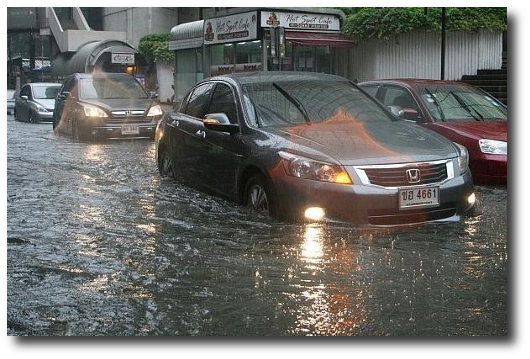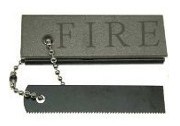Floods are the most common natural disaster in the United States. While a flood could be the result of many days of rain, heavy rains and broken levees could result in a flash flood.
Flash floods arrive over the span of a few hours, which leaves little room to prepare once the threat is imminent. The safest approach to preparing for a flood or any natural disaster is to have a plan in place well before the threat actually arises.
At Home
When preparing for any natural disaster, it is important to have an emergency supply kit. Because most natural disasters will require you to evacuate, you will want to create a supply kit that is portable. This could be as simple as a hiking backpack or storage containers that can easily be loaded into the car.
Basic Emergency Checklist
· Water
· Food with a long shelf-life
· An NOAA weather radio
· Batteries
· Flashlight/Lantern
· Camping gear
· A change of climate appropriate clothes for the entire family
· First Aid Kit and any prescription medicine
If you live in a flood plain, you will need to identify an evacuation point. This may be a building on which the entire community will rely for shelter. In this case, you will need all of your supplies. You could also consider driving to a friend or family member’s house – a considerably more comfortable option. Regardless, every member of the family needs to have the emergency evacuation plan memorized.
On the Road
Travelers are exposed to the greatest amount of danger during a flash flood. Visibility is low and waters are unpredictable. Changing routes can often seem as dangerous as risking moving waters, but only two feet of water can carry away most automobiles.
· Do not cross moving water as depth can be deceiving. (The road may be washed out beneath the water.)
· Adhere to barricades.
· When faced with rising water, turn around and seek higher ground.
· If your car stalls, abandon the vehicle and climb to higher ground.
Most of the fatalities that occur during floods are the result of drivers becoming trapped in flood waters. Carrying a light emergency kit of energy bars, water, a rain poncho, a flashlight, batteries and a fresh pair of socks can help immensely if you need to abandon your car. A small hiking backpack will offer more than enough storage and mobility for the occasion.
After the Flood
Hopefully you have flood insurance that will allow you to repair the damages to your home. Use extreme caution when reentering any buildings that have been flooded. Wear sturdy, protective shoes and bring flashlights and lanterns. Take photos for your insurance claim and note any potential damages to the electric or plumbing systems.
After the initial inspection is completed, the entire home will need to be sanitized. Flood waters are often contaminated with sewage and other chemicals. Be sure to discard any food that has been touched by flood waters.
Nadia Jones is an education blogger based in Houston, Texas. Through her writing, Nadia hopes to present her readers with accurate and helpful information about the best online degrees available. Besides writing about education, Nadia also enjoys covering topics as varied as personal finance, parenting, traveling, sustainable living, and more. She welcomes comments at [email protected]
(Picture Credit- Travel Blog)










